'Deconstruction' of the Cap de Creus Area with Ecological Dynamics
 Above view Tudela-Culip Restoration Project, Source by EMF
Above view Tudela-Culip Restoration Project, Source by EMF
The Tudela-Culip Restoration Project results from democracy and ecological conservation of the Cap de Creus area, declared a Natural Park in 1998. Originally Club Med, built in 1960, it was a 400-room private holiday village accommodating around 900 visitors in summer. The Club Med project is a successful project of a modern movement settlement on the Mediterranean coast with a primitive concept, intended to establish a connection with nature.
 Cubes viewpoint Tudela-Culip Restoration Project, Source by EMF
Cubes viewpoint Tudela-Culip Restoration Project, Source by EMF
Due to its outstanding geological and botanical value in the summer of 2003, Club Med was permanently closed, and in 2005 it was acquired by the Spanish Ministry of Environment and an active restoration project. As a result, the area was 'deconstructed' with its ecological dynamics brought to life. One of the programs was an innovative public landscaping project and the work became the largest Mediterranean coast deconstruction & restoration project ever.
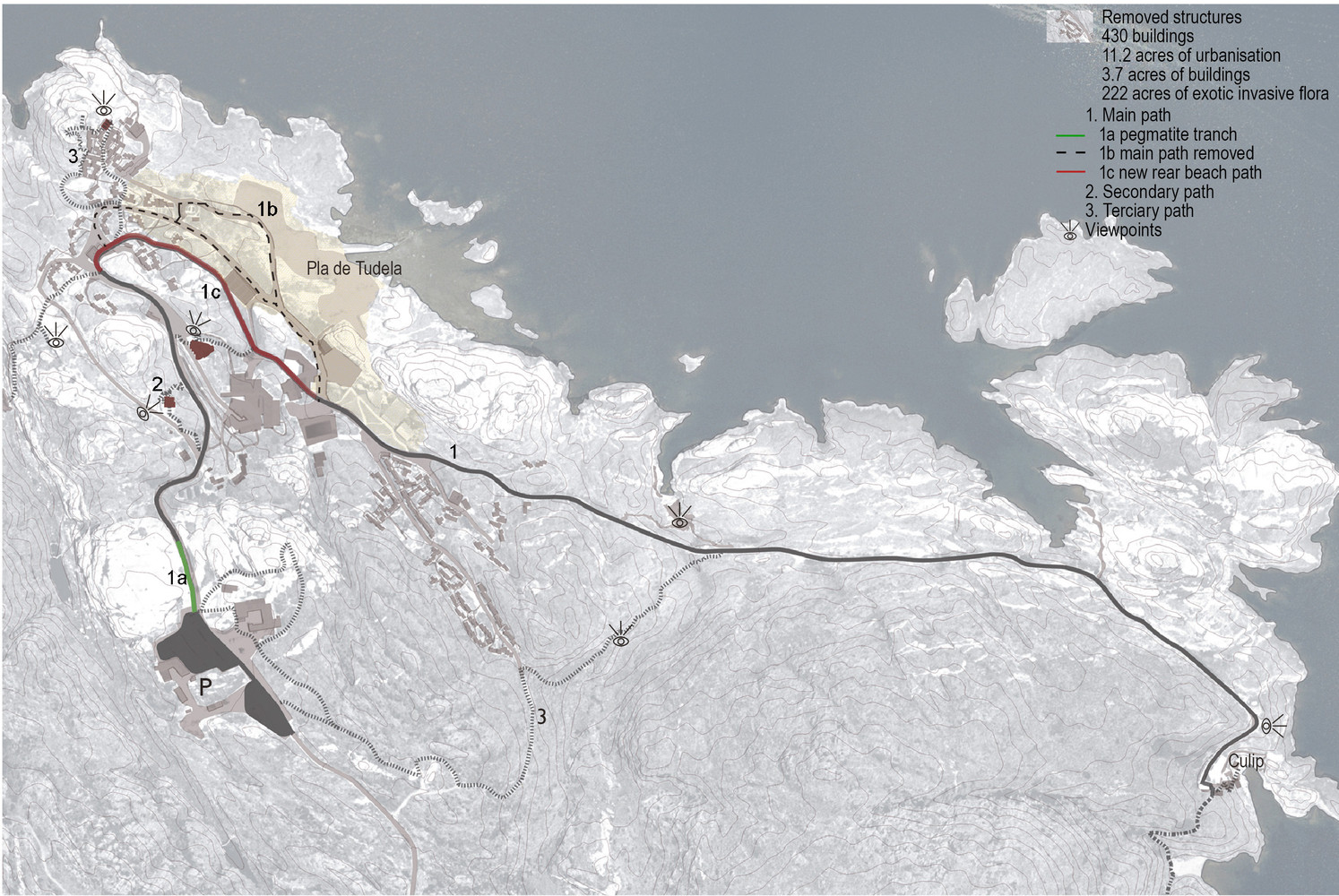 Masterplan Tudela-Culip Restoration Project, Source by EMF
Masterplan Tudela-Culip Restoration Project, Source by EMF
The project was designed by EMF+Ardevol with important aspects of landscape architecture in mind, i.e. identifying, uncovering and ultimately transforming a site, to fit what already exists and uncovering and celebrating the 'real' landscape in its specificity. This concept tries to neutralize specificity and establish the universality of artifacts, literal, real, connected with history, giving (elements or fabrics) an aura of authenticity through repetition, reflection, or criticism. In addition, this design constructively takes a minimalist approach, this is done to reduce the existing materials on site plus Cor-ten steel to integrate the landscape and resistance to marine exposure.
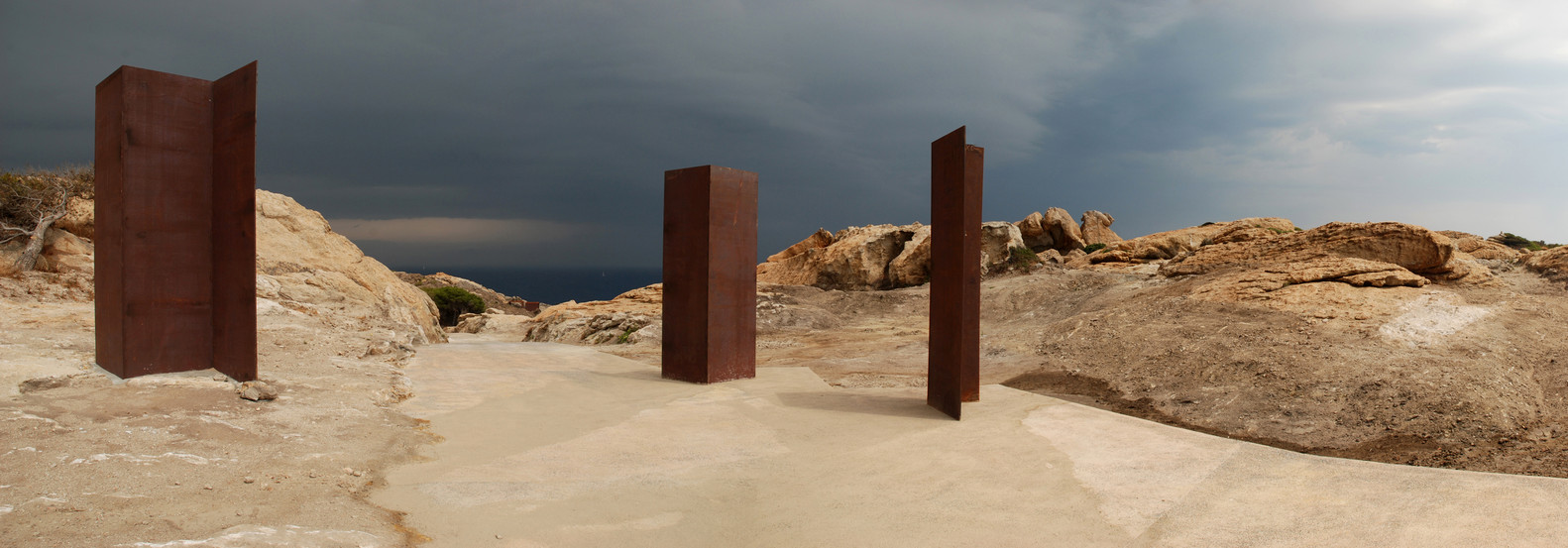 Pan Tudela-Culip Restoration Project, Source by EMF
Pan Tudela-Culip Restoration Project, Source by EMF
 Pan cube Tudela-Culip Restoration Project, Source by EMF
Pan cube Tudela-Culip Restoration Project, Source by EMF
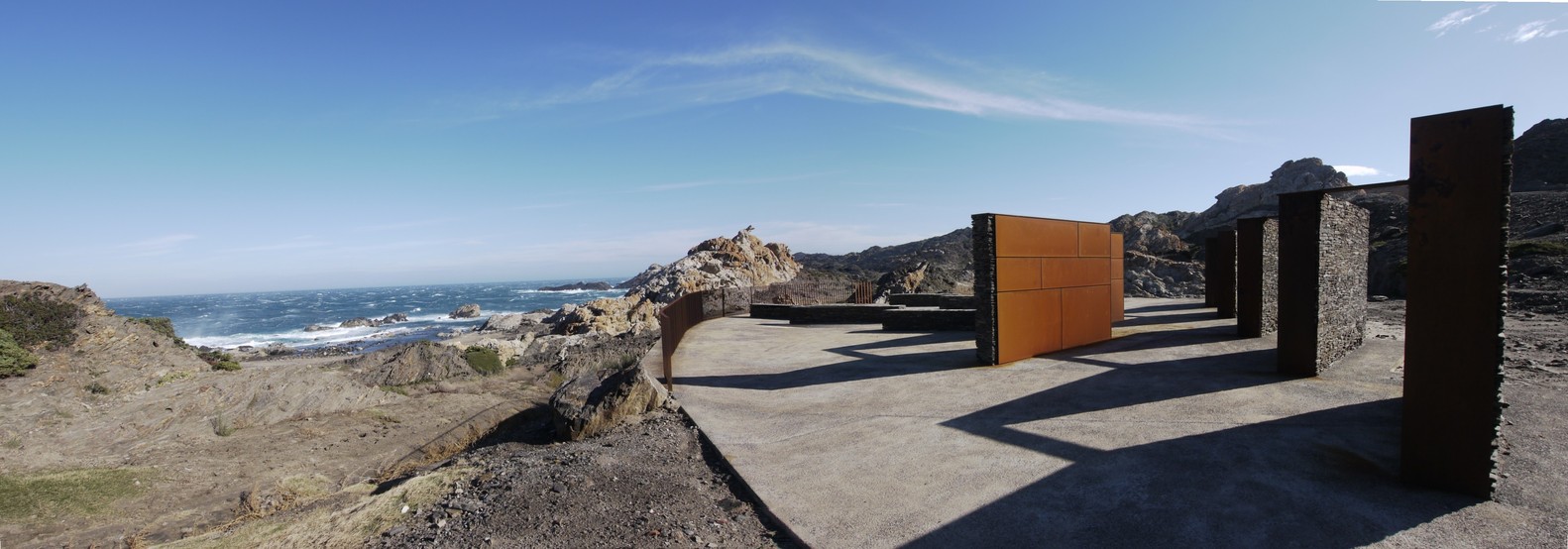 Pan Tudela-Culip Restoration Project, Source by EMF
Pan Tudela-Culip Restoration Project, Source by EMF
The design process took approximately five years of research, the design team walked more than 200 km on site, took and studied more than 15,000 drawings, and hired up to 50 specialists in various fields related to nature restoration, to find ways to optimize deconstruction, reclamation of natural dynamics, and social polarization. In addition, it allows flexibility to integrate inventions after deconstruction such as a solution to increase the outcrop 'Pegmatite' at the entrance was found and negotiated with the builder during the work.
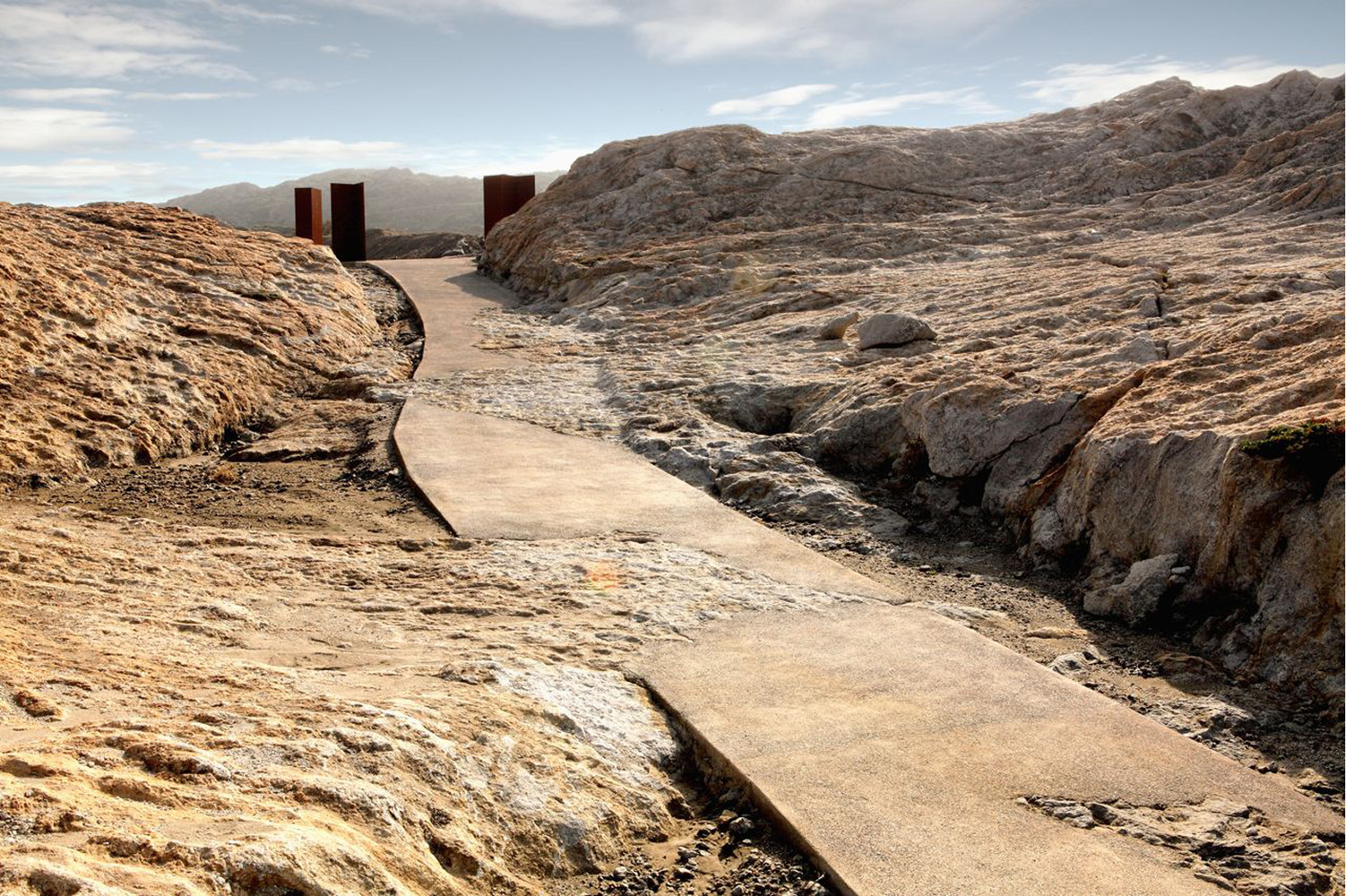 Pegmatite tranch Tudela-Culip Restoration Project, Source by EMF
Pegmatite tranch Tudela-Culip Restoration Project, Source by EMF
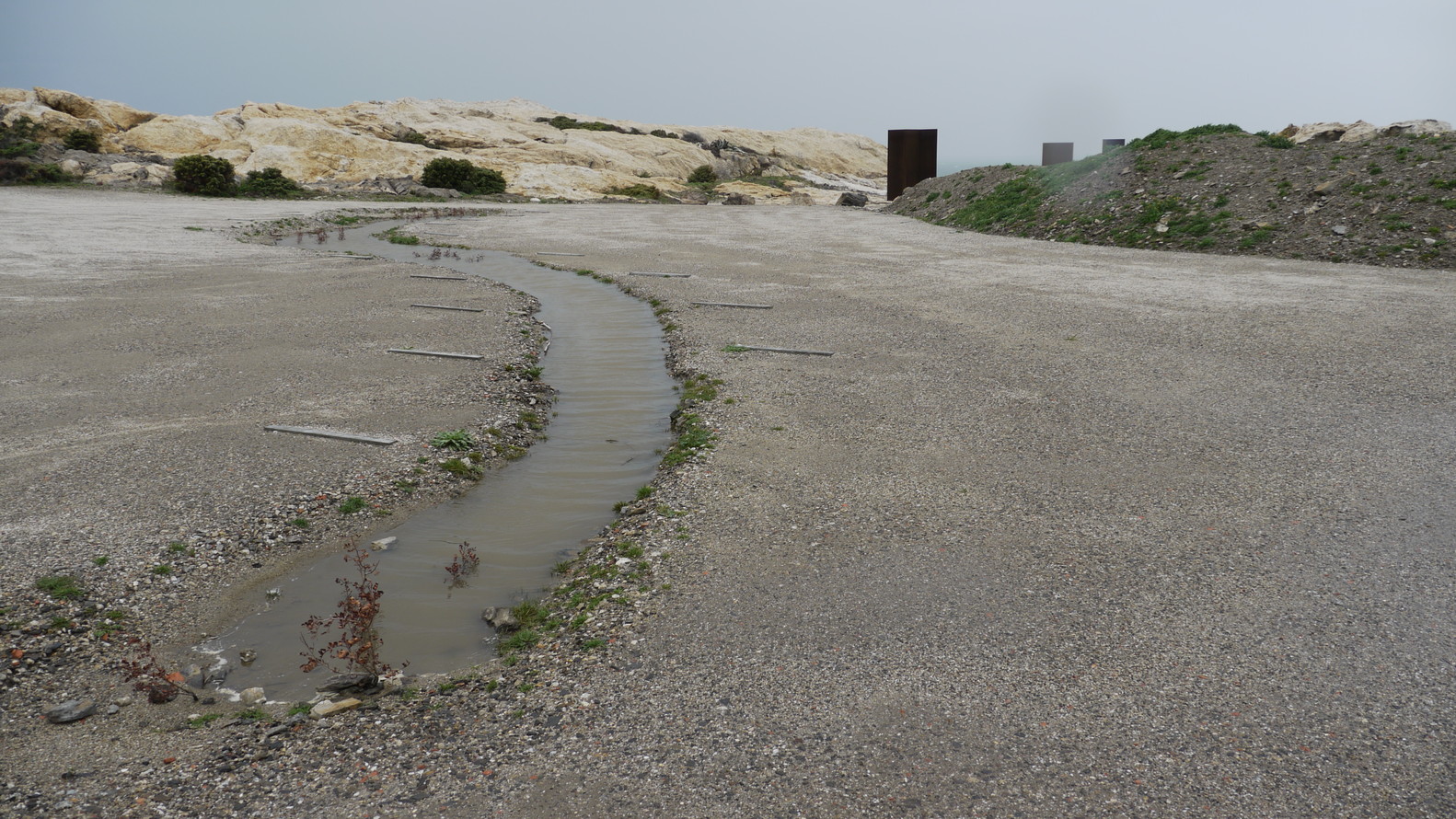 Nature at work Tudela-Culip Restoration Project, Source by EMF
Nature at work Tudela-Culip Restoration Project, Source by EMF








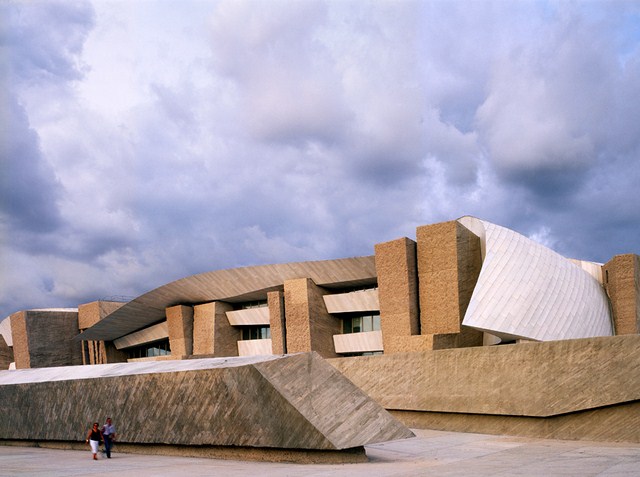
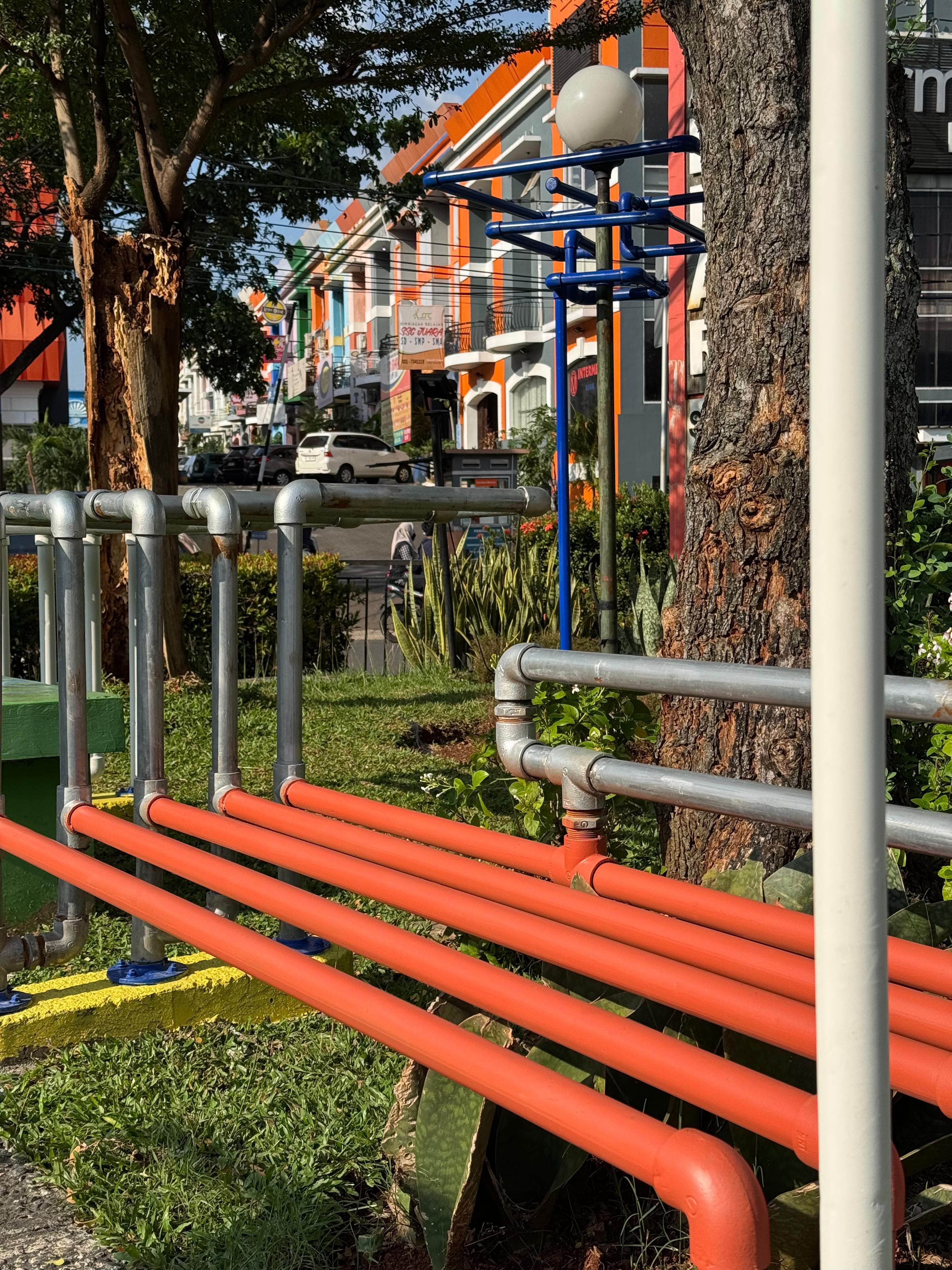
Authentication required
You must log in to post a comment.
Log in